This blog post is about the photo that started my career in photography. The photo, titled “Monsoon Season in Zion,” holds a special place in my heart. Here, I aim to share the background story of how this photo came to be.
It was monsoon season—a time for dramatic skies and unique conditions in southwest Utah. The target for the day was the peaks of Zion National Park. I hoped that the combination of sunset and stormy weather would create excellent photography opportunities.
First, our small group of hikers needed to reach a spectacular vantage point, involving an interesting hike up a sandstone ridge adorned with stunning hoodoos. The plan was to arrive at our ultimate destination by sunset to capture the best conditions. We began our hike around 7 PM.
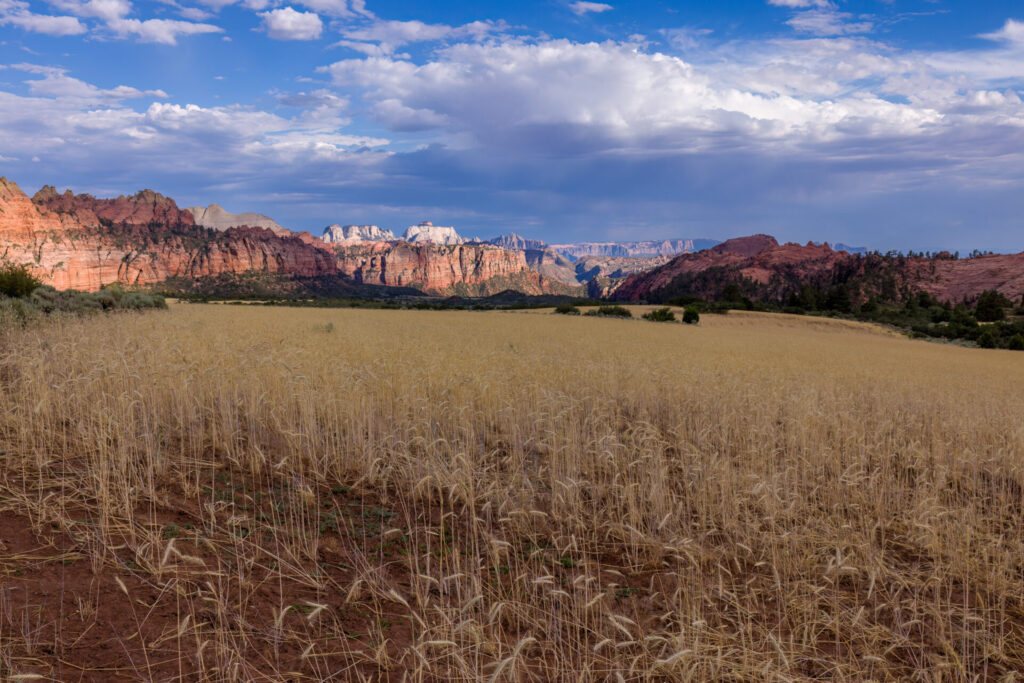
It was a beautiful spot with large fields of grain growing in the foreground and the Zion peaks in the background lit by the late afternoon sun. There were clouds in the sky casting shadows here and there making for interesting compositions.
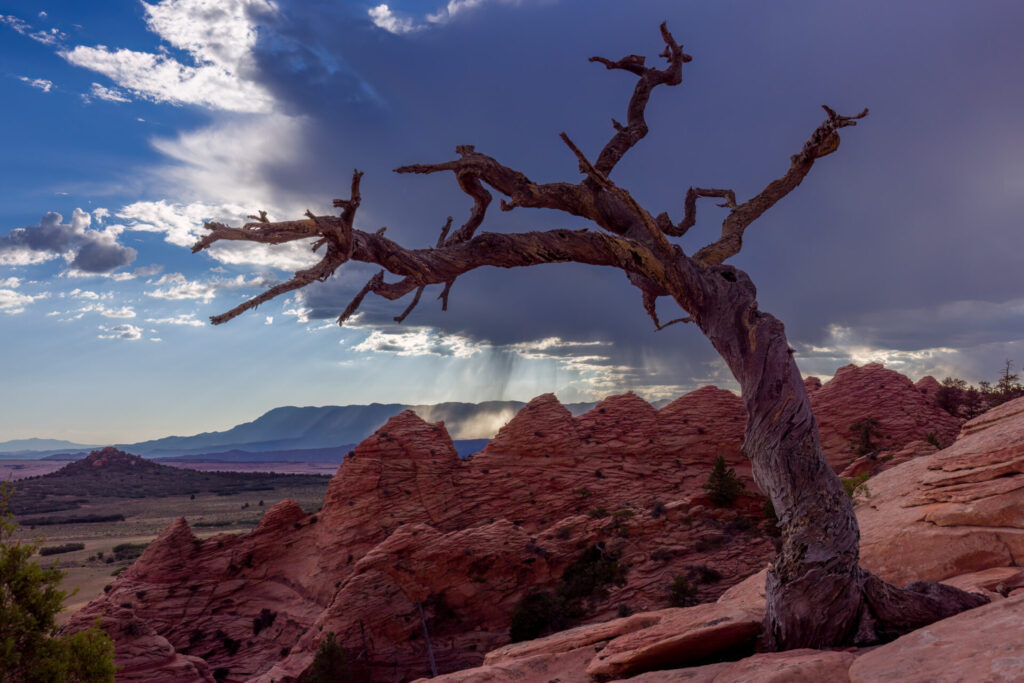
We proceeded onto the ridge. A massive storm to the west generated strong winds, blowing sand into the air. In the foreground stood the remnants of a twisted, dead tree planted in the sandstone. The sunlight illuminated the blowing sand from the storm, while rain fell on its edge. In the distant background, the Pine Valley Mountains, with peaks above 10,000 feet, were visible.
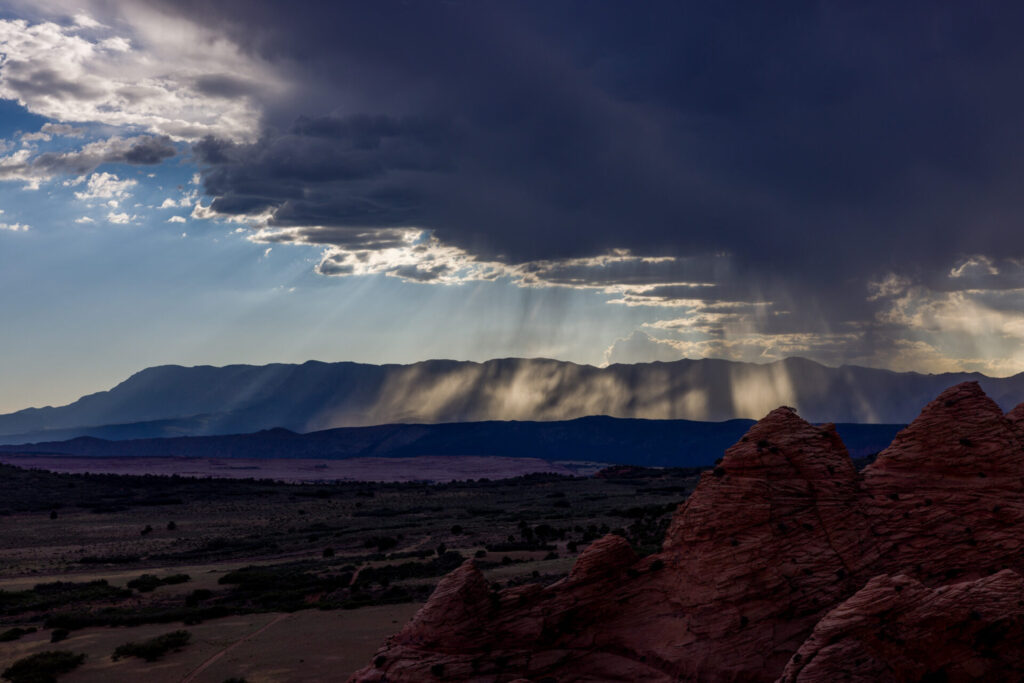
A closer look at the blowing sand revealed light reflecting brightly off the particles, with the Pine Valley Mountains stretching along the horizon. These mountains were formed by a laccolith—the largest in the United States and possibly the world. A laccolith forms from horizontal lava intrusions between rock layers. When the magma vent closed, it prevented an explosive eruption, forcing the lava into the layer. Over time, the lava hardened into granite-like rock and was later exposed by erosion.
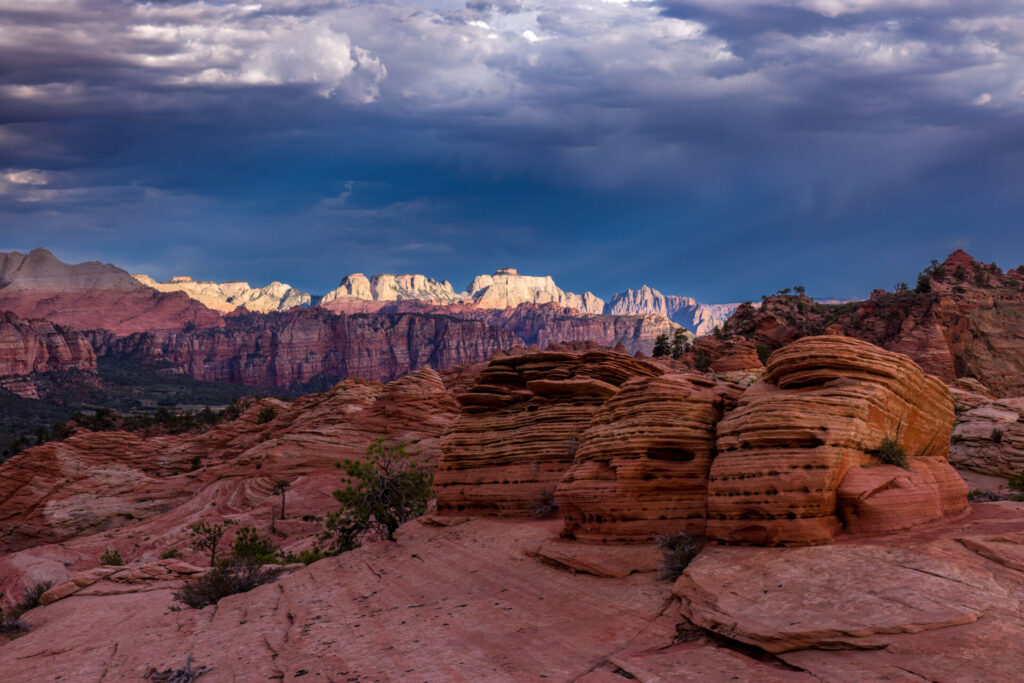
Our hike continued along the ridge. As the evening progressed, we observed the clouds thickening over the Zion peaks. Everything was in shadow except for the tops of the distant peaks, promising a spectacular sunset. We enjoyed wonderful views of sandstone hoodoos in front of us.
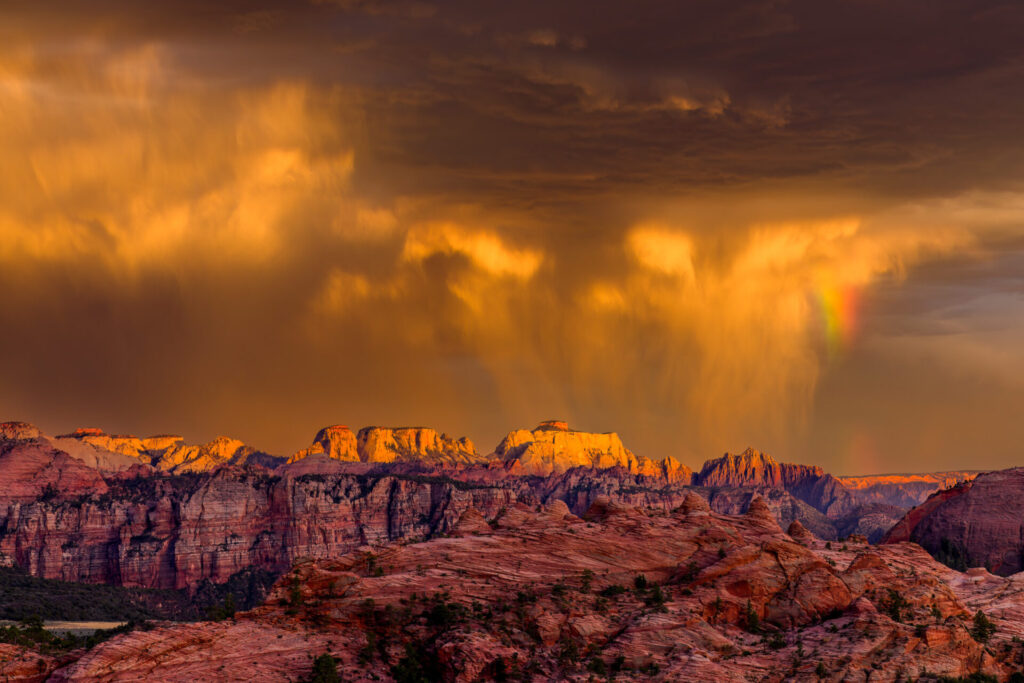
Finally, we reached our ultimate destination just in time for the sunset. And wow, it did not disappoint! The thickening clouds had begun to release rain in the distance. The beautiful, warm sunset light illuminated the distant peaks and lit up the undersides of the clouds and the falling rain. Best of all, a portion of a rainbow appeared on the edge of the storm. Another hoodoo-covered ridge, similar to the one we were standing on, was visible in the foreground.
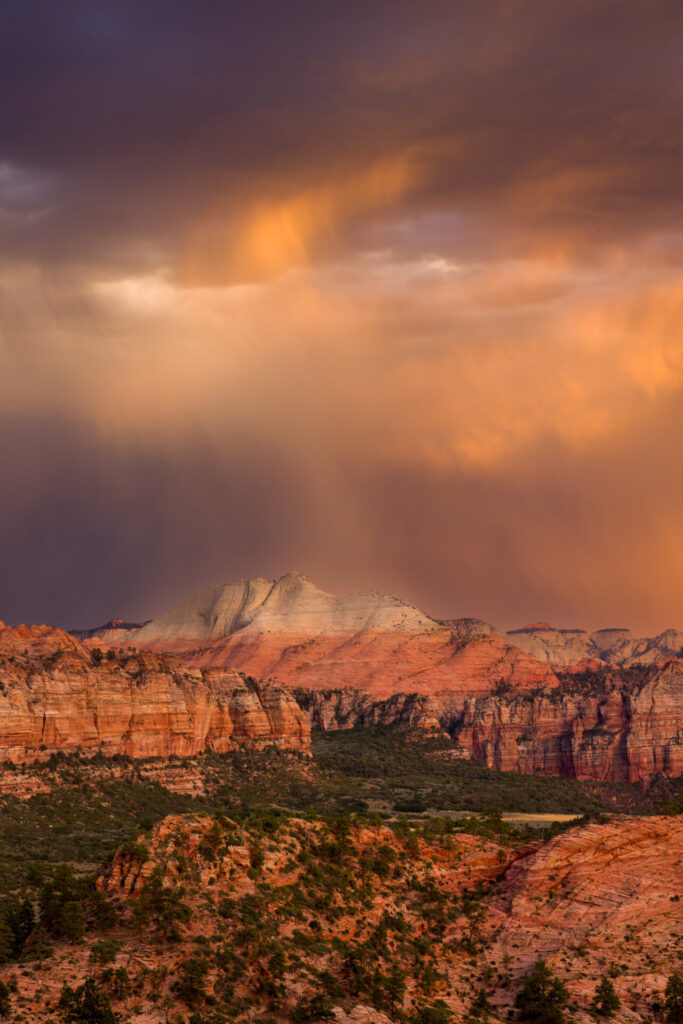
With the sun now set, it was time to head back. The rain, which had stayed distant before, began to fall on us. Combined with the fading light, this made the return trip a bit hazardous. It was almost completely dark and raining harder by the time we got back, necessitating a climb down the side of the ridge in darkness. Thankfully, we had brought headlamps.
Landscape Photography Tips:
- Always bring headlamps for evening hikes.
- Check the weather forecast to capture dramatic skies.
- Be prepared for changing conditions, especially during monsoon season.
So why do I say this photo launched my photography career? Despite having pursued photography at an amateur level for over 20 years, it was only after retiring that I had the time to follow my dream of becoming a landscape photographer. I began applying to art festivals, starting with the Kayenta Art Festival in October 2022, just three months after this hike. I submitted the Monsoon Season in Zion photo for jurying and was accepted into the festival. Later, I submitted this photo to the Kayenta Photography Show, where it won the Juror’s Choice award.

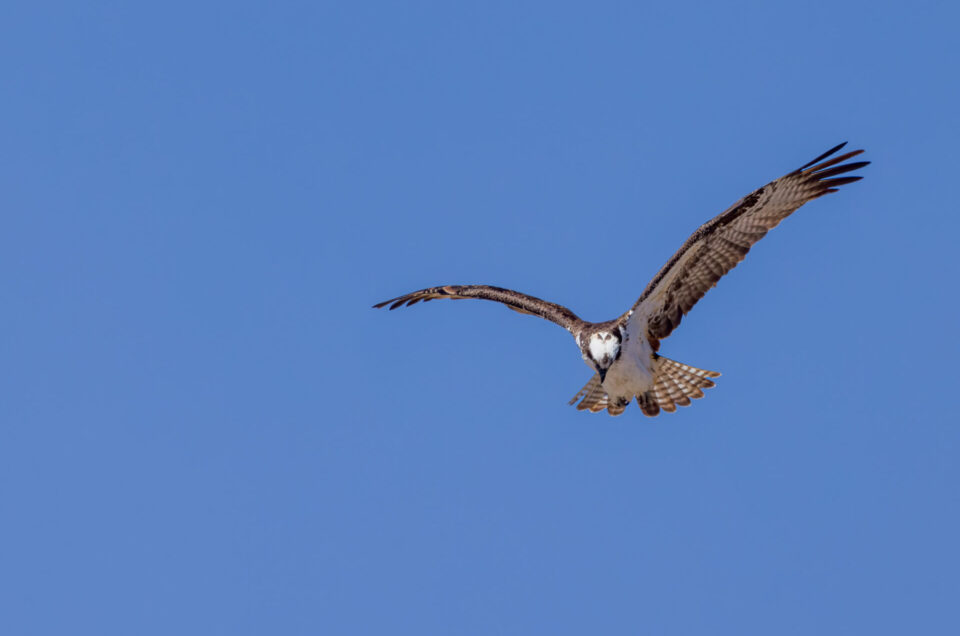


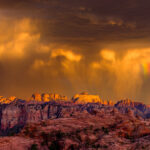
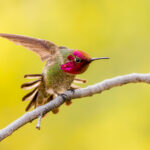
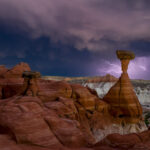

Leave a reply